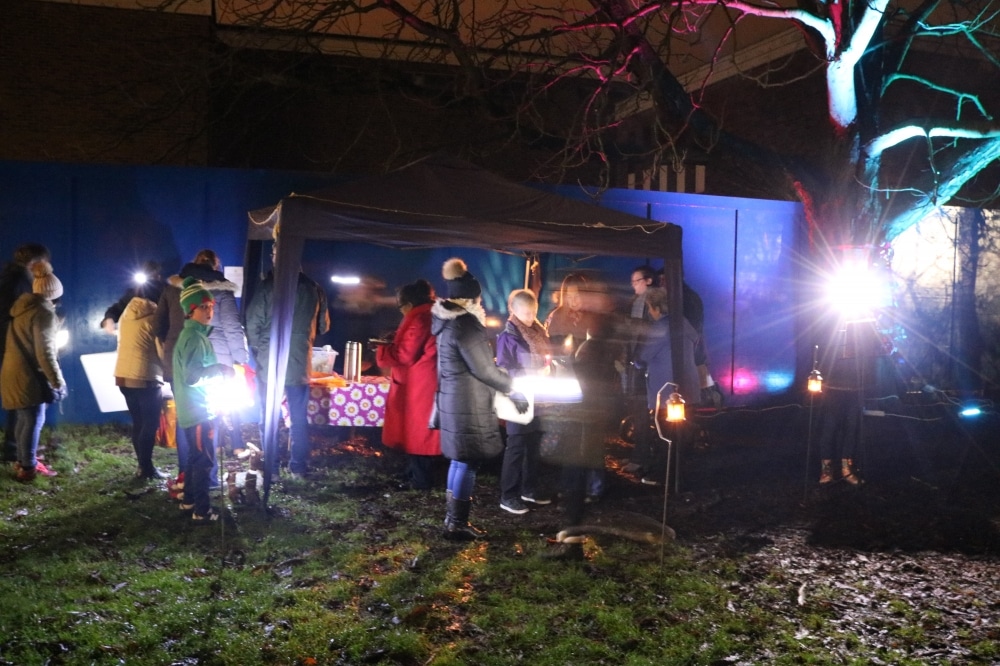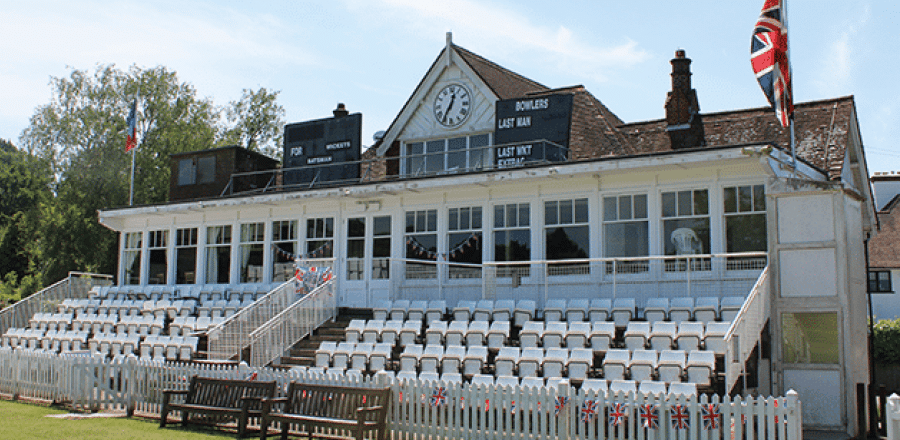The news brought jubilation to the campaigners who staged a week-long vigil around – and in the branches of – the mature horse chestnut tree to save it from the axe.
It had been scheduled for removal as part of plans to build a new medical centre on the site of the old Teen and Twenty Club.
The tree had been diagnosed as suffering from bleeding canker when the planning application was approved by Tonbridge & Malling Borough Council.
It is growing on the designated boundary of the new building and the council decided it should be felled to avoid interfering with the foundations and threatening health and safety.
But the resulting outcry brought nationwide publicity for the campaign and a petition with more than 2,000 signatures called on the developers Assura to keep the tree.
The company met the Keep River Lawn Green [KRLG] campaigners and agreed to call in a highly respected arbiculturalist to carry out an in-depth survey of the root system and general vitality of the tree.
The Essex-based inspectors Sharon Hosegood Associates published its findings on Monday [December 17], saying: “It is highly likely that the tree can be retained with care.
“It will need to be sensitively pruned and managed with its new profile,” added Ms Hosegood, who used a ground-penetrating radar to examine underground.
“Improving the rooting environment will assist the tree in establishing new roots, boosting the tree’s health and condition, and its resistance to disease. It will also reduce the compaction.”
The company will use a high-pressure soil injector to deliver beneficial nutrients such as biochar charcoal, fungi worm casts and phosphites.
The KRLG chair Mark Hood, who was among those who strapped themselves to the tree with a harness during the 24/7 vigil, was delighted with the news.
“Assura have listened to our voices and understood our deep concerns that a much loved tree was going to be lost unnecessarily by our community and we thank them for their change of direction,” he said.
“We are delighted that they have taken on board the feelings of residents and thank them for their consideration of the evidence provided by our team including arboricultural and architectural experts.”
KRLG are committed to saving the public green space adjacent to the new medical centre, which the council’s Cabinet voted to sell to developers last year for the provision of apartments.
The half-acre plot adjacent to the High Street has a further eight horse chestnut trees on it. Mr Hood added: “This is a massively important moment for the Keep River Lawn Green campaign.
“We are still awaiting the result of our application to designate River Lawn as a Village Green to save all nine mature trees and prevent the loss of the open space there. We have similarly applied for all the footpaths to be registered as Rights of Way.
“We have won a victory for common sense at this stage and we look forward to the challenges ahead.”
Mr Hood paid tribute to those who helped him stage the protest, which saw wellwishers delivering food, warm clothing and sleeping bags to the campaigners.
Police Community Support Officers dropped in regularly and even the Hartley Morris Men danced underneath the branches to highlight the tree’s plight.
“Everyone who has signed a petition or collected signatures, stood under a tree or sat in it has played their part and we are very grateful,” said Mr Hood. “Many thanks for your support we couldn’t have done this without you.
The inspection report said the original recommendation to remove the tree by Lloyd Bore was ‘not unreasonable given the seemingly worse condition of the bleeding canker during the 2017 survey’.
The arboriculturalist added: “It is unusual to have such a detailed investigation on a single tree as found in this report, although it is becoming increasingly common.”
The campaign has gained support from the protesters trying to stop Sheffield City Council from cutting down around 17,000 trees in the city.
Paul Powlesland, a barrister who represented residents who were threatened with prison sentences for breaking an injunction stopping direct action protests, has also offered his services to KRLG free of charge.
Sharon Hosegood Associates said: “The next stage is to develop method statements further and liaise with the design and construction team.”
It warned: “If an unforeseen issue arises that compromises the health and stability of the tree, [it] will need to be removed following a report to all parties by way of detailed explanation.”
But the statement added: “This is not anticipated as, based on the discussions I have had with the team, I believe that tree retention is achievable with care.”
The council says ‘start building’
Martin Coffin, Tonbridge & Malling Borough Council’s Cabinet Member for Finance, Innovation and Property said: “The council hopes that construction of the much needed Medical Centre can progress as soon as possible to deliver these high-quality facilities for the benefit of our community. We look forward to receiving further information in relation to the proposed works to the tree which we hope to be able to accommodate.”
The inspector’s statement:
Conclusions of independent assessment of tree by Sharon Hosegood Associates:
“It is highly likely that the tree can be retained with care. It will need to be sensitively pruned and managed with its new profile. It will be protected during the works by a combination of ground protection and by the application of method statements. Further work is required to establish the finer details of installing the pile cap…and the parking bays near the tree.
Improving the rooting environment will assist the tree in establishing new roots, boosting the tree’s health and condition, and its resistance to disease. It will also reduce the compaction.
The method of improvement is by high-pressure soil injector designed to deliver beneficial nutrients and biochar, mixed with beneficial fungi and worm casts.
I also recommend the addition of phosphites, which is thought to assist in enabling the tree to fight off bleeding canker (pending further trials).
The work involves using the probe every 2m within the rooting area down to 1m, and soil improvers added.
I have obtained a quote from a specialist company, and permission would be required from the council as land owner.
The original recommendation to remove the tree by Lloyd Bore was not unreasonable given the seemingly worse condition of the bleeding canker during the 2017 survey (based on their report, and the amount of callus growth over old wounds which I have observed) and the proximity of the structure.
If the tree was rooting beyond the line of columns it would have been more complex, and given that the columns are within the root protection area, I respect the original recommendation based on information at the time.
It is unusual to have such a detailed investigation on a single tree as found in this report, although it is becoming increasingly common.
The next stage is to develop method statements further and liaise with the design and construction team. If an unforeseen issue arises that compromises the health and stability of the tree, [it] will need to be removed following a report to all parties by way of detailed explanation.
This is not anticipated as, based on the discussions I have had with the team, I believe that tree retention is achievable with care.”








